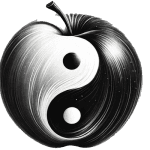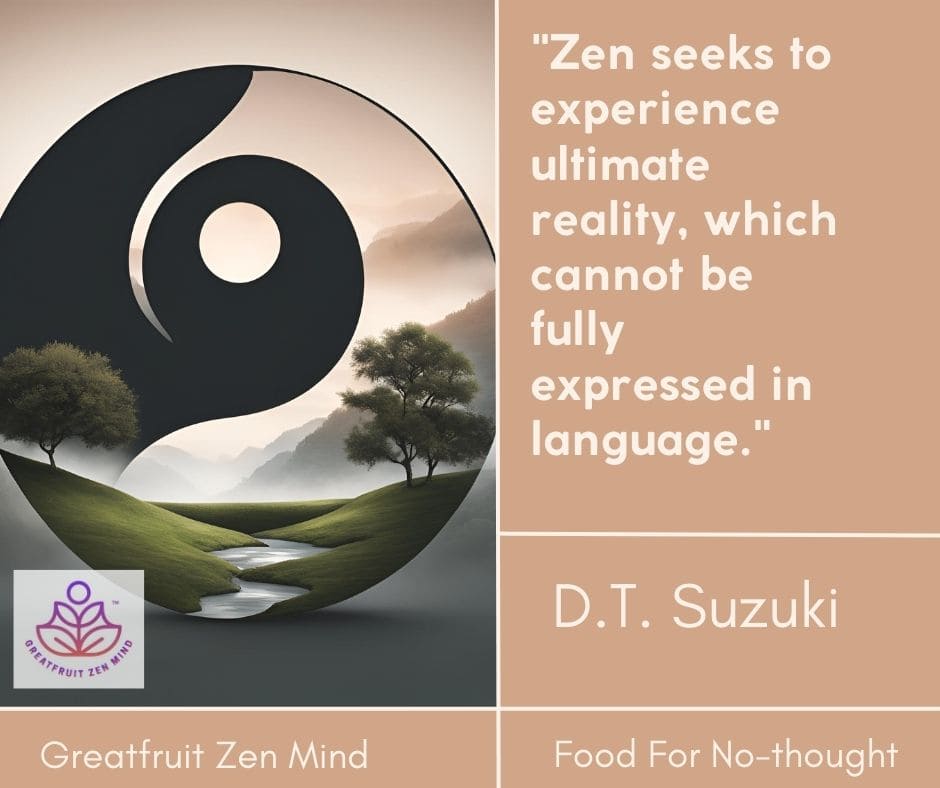Read time 5 minutes. Ultimate Reality is a stand alone article in our Who Am I series.
At the heart of self-inquiry lies the question Who am I?—a question that immediately collides with the mother of all dualities: the false self of the ego and the true self of Tao. Yet here we run into a paradox. Our practice points toward realizing what is beyond words, but our lessons are made of words. Words are limited. They are dualistic. They manipulate as much as they reveal.
And yet, language is the best vehicle we have. So the question becomes: how can we use words to see past words, and glimpse the truth they cannot hold?
Ultimate reality vs. linguistic truths
In our last lesson, we considered the word essence, which itself contained dual meanings. One meaning pointed to the intrinsic core of something. The other meaning was casual, summarizing: “Essentially, what I mean is…” A single word split in two directions—already a duality.
This is the subtle problem with language. Words attempt to convey something accurately, yet they are always shaped by interpretation. We hear what we expect to hear. We shape meanings to fit our desires. And so language, even when honest, manipulates.
Roses, names, and negation
Gertrude Stein once wrote: “Rose is a rose is a rose.” A rose is what it is. William Shakespeare countered: “A rose by any other name would smell as sweet.” The name does not alter the thing. Yet Krishnamurti reminded us: “The moment you label me, you negate me.”
Already, we see the paradox. Naming affirms and negates. Labels clarify and distort. Stein’s rose is tautology—a person’s name and also a flower. Shakespeare’s rose transcends labels, and Krishnamurti warns that any label is a cage. Language both reveals and undermines.
The artist’s device and the illusion of truth
Poets, artists, musicians—all are illusionists. Their trick is to take the commonplace and make us see it again. Where one person says, “A name doesn’t change who you are,” Shakespeare refines it into: “A rose by any other name would smell as sweet.” Brevity becomes wit, and wit becomes truth.
This device works. It jolts us from habit and invites presence. It helps us stop and smell the roses. But it also deceives. It tempts us into mistaking literary truth for ultimate truth. Sometimes, as with Bob Dylan, the artist becomes burdened by their own words—treated as a sage when all they offered was an angle of language.
Words can wake us up, but they cannot hold the awakening itself.
Self-referential truth and its trap
Stein’s line—“a rose is a rose”—and Ginsberg’s—“waterfalls are their own water falling over themselves”—circle endlessly back into themselves. True enough, but also incomplete. A rose is more than a rose. It’s part of an ecosystem. It sustains bees. It participates in the oneness of all creation.
Likewise, when we define ourselves solely within our individuality, we fall into the same trap. We reduce the self to a narrow loop: I am me because I am me. This is the ego’s trick—self-reference mistaken for ultimate truth. Realizing ultimate reality means seeing through this illusion.
The poetry of practice
But this limitation is itself part of practice. The same way we read poetry or art, we learn to approach words in the teachings. They are not meant to be dissected into fixed meaning. They are to be experienced.
Even the teachings play with this manipulation. A phrase like “Nothing is bigger than God” could be read two ways. Western ears emphasize God—the biggest of all. Eastern ears emphasize Nothing—aligning with the infinite vastness of Tao, the source of all.
Other examples abound: moving from self-ish to self-less, or being in spirit when inspired. Wordplay is not empty—it is a tool pointing beyond itself.
Ultimate reality speaks for itself
Language is a self-referential web. Artists and teachers tap into its paradox to nudge us toward direct experience. But at the end of the day, language cannot deliver what it points toward.
This is why Dylan and Salinger grew weary of seekers. People came asking for answers hidden in their words, when the very point was that ultimate truth cannot be expressed in words. It must be lived, experienced, realized.
Beyond words: Experiential truth
Here, then, is the real challenge: to stop chasing answers in phrases and lessons, and to recognize that ultimate reality is already present. It is experiential, not conceptual.
Chögyam Trungpa wrote: “Ultimate reality is beyond the dichotomy of existence and non-existence.” Nisargadatta echoed: “…whatever thoughts come to you in connection with the ‘I am’ empty them of all meaning, pay no attention to them. Your being is mixed up with experiencing. All you need is to unravel being from the tangle of experiences.”
At some point, we must accept that we have heard enough words. At some point, words themselves become the obstacle. What remains is the direct realization of our essential nature—profound, simple, and beyond expression.
Explore more:
The ideas that we are talking about in this article are nothing new. Take, for example, this article on The Philosophy Forum, which discusses the Law of Identity. This law, A = A, finds its roots in ancient Greece. Look over the ensuing conversation on the message board of this article. You will see that this law has ramifications regarding philosophy, math, physics, the nature and purpose of language and more. The conversation even goes on to discuss the nature of reality itself.
This article will take you down a bit of a rabbit hole, but a rabbit hole is what led Alice to her great adventure. The crossover that occurs between our lessons and the lessons of science, art and philosophy can be encouraging, inspiring and validating.
–

🌀 From the GZM Archives – Polished, Preserved, Still Relevant.




Leave a Reply